Shalom Goldman at Marginalia:
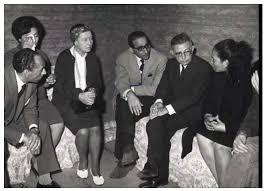 By the time that Sartre and de Beauvoir arrived in Tel Aviv, Israeli leaders and readers were wary of how Sartre would respond to Israel. In an interview with the Israeli newspaper Yediot Aharonot, Sartre affirmed Israel’s right to exist, but his support did not go beyond that affirmation. Clearly his sympathies were with the Palestinians – both with the refuges he met in Gaza and with the Palestinians living in the state of Israel as “Israeli Arabs.”
By the time that Sartre and de Beauvoir arrived in Tel Aviv, Israeli leaders and readers were wary of how Sartre would respond to Israel. In an interview with the Israeli newspaper Yediot Aharonot, Sartre affirmed Israel’s right to exist, but his support did not go beyond that affirmation. Clearly his sympathies were with the Palestinians – both with the refuges he met in Gaza and with the Palestinians living in the state of Israel as “Israeli Arabs.”
Israeli fears were realized when Sartre, in his talks with Jewish intellectuals, opened each conversation with the request that his hosts acknowledge that the Palestinian refugees are entitled to return to their land. “You must understand,” said Sartre, “that it is impossible to justify the Jewish right of return after two thousand years and to deny the same rights to the Arabs after only twenty years.”
more here.

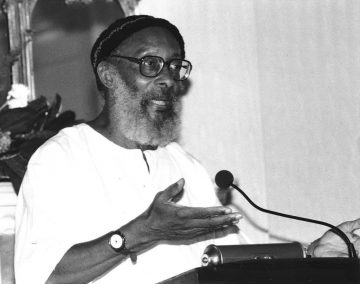 The early notices of Kamau Brathwaite’s death yesterday emphasized the indisputable fact that he was a Caribbean and West Indian writer. The emphasis says something crucial about Brathwaite as a person and an artist. He wrote over thirty books of an astonishing variety and sophistication—history, anthropology, tracts and polemics, poetry and fiction (the poetry and fiction unique and radical in the way language and the technologies of language are understood and deployed). He ranged over three continents during his tremendous career. He went to college in England and studied with F. R. Leavis. He did not only live and work in Africa, he had an Africanist period in his thinking and took an African first name. He taught in New York. He never, though, separated himself from either his imaginative allegiance to the speech and culture of the English-speaking Caribbean or his physical allegiance to his birthplace, Barbados. The eulogies now pouring out of that island are rich with the kind of grief and pride that are triggered only by the loss of a beloved native son.
The early notices of Kamau Brathwaite’s death yesterday emphasized the indisputable fact that he was a Caribbean and West Indian writer. The emphasis says something crucial about Brathwaite as a person and an artist. He wrote over thirty books of an astonishing variety and sophistication—history, anthropology, tracts and polemics, poetry and fiction (the poetry and fiction unique and radical in the way language and the technologies of language are understood and deployed). He ranged over three continents during his tremendous career. He went to college in England and studied with F. R. Leavis. He did not only live and work in Africa, he had an Africanist period in his thinking and took an African first name. He taught in New York. He never, though, separated himself from either his imaginative allegiance to the speech and culture of the English-speaking Caribbean or his physical allegiance to his birthplace, Barbados. The eulogies now pouring out of that island are rich with the kind of grief and pride that are triggered only by the loss of a beloved native son.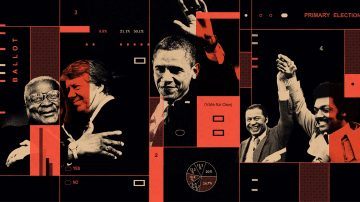 Not that long ago, they were just a slender fraction of the party, one kept at arm’s length by presidential candidates. But today, black voters have emerged as a muscular political force and one of the most intensely courted constituencies in Democratic politics. In 2020, they are likely to account for at least one out of every four ballots cast in the party’s presidential primaries, more than tripling — and perhaps even quadrupling — the share they accounted for just a few decades ago. It’s a political and demographic revolution over the course of 40 years that we are able to document here through exit polling, which major media organizations have been sponsoring on a wide scale in every Democratic presidential primary race since 1976. But until now, much of this data has been hard to come by, unavailable online, walled off in academic archives, even discarded by the news media outlets that sponsored it.
Not that long ago, they were just a slender fraction of the party, one kept at arm’s length by presidential candidates. But today, black voters have emerged as a muscular political force and one of the most intensely courted constituencies in Democratic politics. In 2020, they are likely to account for at least one out of every four ballots cast in the party’s presidential primaries, more than tripling — and perhaps even quadrupling — the share they accounted for just a few decades ago. It’s a political and demographic revolution over the course of 40 years that we are able to document here through exit polling, which major media organizations have been sponsoring on a wide scale in every Democratic presidential primary race since 1976. But until now, much of this data has been hard to come by, unavailable online, walled off in academic archives, even discarded by the news media outlets that sponsored it.
 The
The  The
The 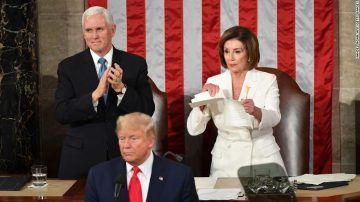 As we enter what feels like the second or third decade of the 2020 presidential campaign, a question hovers menacingly over American politics: Can liberals get a grip? Three years into the Trump era, it cannot have escaped anyone that the country’s political system is in the throes of a major crisis. Yet the mainstream of the Democratic Party remains bogged down, lurching back and forth between melancholy and hysteria. “The Republic is in danger!” the Rachel Maddows of the world intone, but aside from a Trump impeachment that has no hope of actually removing him from office, the solutions on offer stay the same as they were three, ten, fifteen years ago: means-tested tweaks to what little remains of the welfare state, limp appeals to civility and tolerance for (meaning accommodation to) opposing political views, and a “muscular” but gloomy foreign policy that envisions our forever wars stretching on for decades. For more than half a century, the political program that is now called American liberal centrism remade much of the world in its own image and turned the US into the preeminent military and economic power. Today, centrists’ best idea for a bold, young candidate is a millennial Harvard robot who worked for the odious consulting firm McKinsey before, as a midwestern mayor, apparently alienating every single black resident of South Bend. This is an ideology suffering from a failure of imagination.
As we enter what feels like the second or third decade of the 2020 presidential campaign, a question hovers menacingly over American politics: Can liberals get a grip? Three years into the Trump era, it cannot have escaped anyone that the country’s political system is in the throes of a major crisis. Yet the mainstream of the Democratic Party remains bogged down, lurching back and forth between melancholy and hysteria. “The Republic is in danger!” the Rachel Maddows of the world intone, but aside from a Trump impeachment that has no hope of actually removing him from office, the solutions on offer stay the same as they were three, ten, fifteen years ago: means-tested tweaks to what little remains of the welfare state, limp appeals to civility and tolerance for (meaning accommodation to) opposing political views, and a “muscular” but gloomy foreign policy that envisions our forever wars stretching on for decades. For more than half a century, the political program that is now called American liberal centrism remade much of the world in its own image and turned the US into the preeminent military and economic power. Today, centrists’ best idea for a bold, young candidate is a millennial Harvard robot who worked for the odious consulting firm McKinsey before, as a midwestern mayor, apparently alienating every single black resident of South Bend. This is an ideology suffering from a failure of imagination. Reichert’s body of work is characterized by consistent themes across fifty years of nonstop production. They are films about the lives of ordinary working people in America, often women, usually set in the Midwest. The films are grounded in deep research and driven by a commitment to social justice. They methodically explore a situation or issue, with close, respectful observation and interviews that are always conducted by Reichert herself. These films were often designed within a context of social movements and intended to have demonstrable effects in the world.
Reichert’s body of work is characterized by consistent themes across fifty years of nonstop production. They are films about the lives of ordinary working people in America, often women, usually set in the Midwest. The films are grounded in deep research and driven by a commitment to social justice. They methodically explore a situation or issue, with close, respectful observation and interviews that are always conducted by Reichert herself. These films were often designed within a context of social movements and intended to have demonstrable effects in the world. I struggle with biography as a genre, because I’m deeply interested in life writing, but allergic to anything that starts with “So-and-so was born in 1946.” Who is this third person claiming omniscience about someone else’s life? Why must we begin with birth, which no one remembers, or with ancestors, and move chronologically? The written record about Carson tries to sandwich her into a conventional, straight biography, wherein a person is born, comes of age, marries, and dies. That’s just not how her life went, or that’s not a way to capture the really exciting stuff, like her relationships with women that happened while she was married, her getting divorced and remarrying and abandoning the same guy, living with the queer cadre at February House, meeting Mary Mercer in her forties and falling in love, coming of age late in life. Queer narratives are all over the place, and queer people frequently take a long time to figure shit out. They live many lives in the space of one life, often with different identities, genders, pronouns, bodies, and styles. Queer narratives demand new forms, and I would love to see more queer writing that fucks with all different genres and literary conventions.
I struggle with biography as a genre, because I’m deeply interested in life writing, but allergic to anything that starts with “So-and-so was born in 1946.” Who is this third person claiming omniscience about someone else’s life? Why must we begin with birth, which no one remembers, or with ancestors, and move chronologically? The written record about Carson tries to sandwich her into a conventional, straight biography, wherein a person is born, comes of age, marries, and dies. That’s just not how her life went, or that’s not a way to capture the really exciting stuff, like her relationships with women that happened while she was married, her getting divorced and remarrying and abandoning the same guy, living with the queer cadre at February House, meeting Mary Mercer in her forties and falling in love, coming of age late in life. Queer narratives are all over the place, and queer people frequently take a long time to figure shit out. They live many lives in the space of one life, often with different identities, genders, pronouns, bodies, and styles. Queer narratives demand new forms, and I would love to see more queer writing that fucks with all different genres and literary conventions.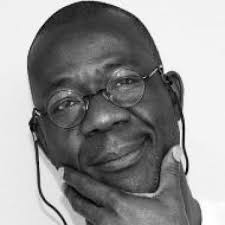 In the 1980s, the Guardian newspaper in Lagos published a weekly Literary Series, including full-length essays on notable writers as well as poems, stories and short reviews. Those essays were later collected into the two-volume Perspectives on Nigerian Literature, edited by Yemi Ogunbiyi. Of the 53 essays in the second volume, Teju wrote eight, the most contributions by a single person in that volume.
In the 1980s, the Guardian newspaper in Lagos published a weekly Literary Series, including full-length essays on notable writers as well as poems, stories and short reviews. Those essays were later collected into the two-volume Perspectives on Nigerian Literature, edited by Yemi Ogunbiyi. Of the 53 essays in the second volume, Teju wrote eight, the most contributions by a single person in that volume.
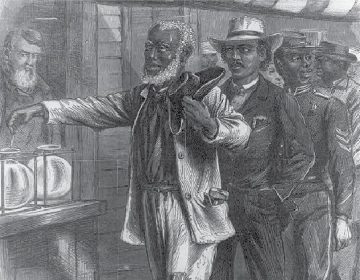 The Voting Rights Act is a historic civil rights law that is meant to ensure that the right to vote is not denied on account of race or color.
The Voting Rights Act is a historic civil rights law that is meant to ensure that the right to vote is not denied on account of race or color. As a technology entrepreneur, when I am approached by startup founders for fundraising advice, I ask: “What would the world look like if you got everything you’re asking for?” It’s a test to see whether they are setting out to solve the right problem or whether they are choosing their preferred course of action and justifying retrospectively.
As a technology entrepreneur, when I am approached by startup founders for fundraising advice, I ask: “What would the world look like if you got everything you’re asking for?” It’s a test to see whether they are setting out to solve the right problem or whether they are choosing their preferred course of action and justifying retrospectively. It’s done. A triumph of dogged negotiation by May then, briefly, Johnson, has fulfilled the most pointless, masochistic ambition ever dreamed of in the history of these islands. The rest of the world, presidents Putin and Trump excepted, have watched on in astonishment and dismay. A majority voted in December for parties which supported a second referendum. But those parties failed lamentably to make common cause. We must pack up our tents, perhaps to the sound of church bells, and hope to begin the 15-year trudge, back towards some semblance of where we were yesterday with our multiple trade deals, security, health and scientific co-operation and a thousand other useful arrangements.
It’s done. A triumph of dogged negotiation by May then, briefly, Johnson, has fulfilled the most pointless, masochistic ambition ever dreamed of in the history of these islands. The rest of the world, presidents Putin and Trump excepted, have watched on in astonishment and dismay. A majority voted in December for parties which supported a second referendum. But those parties failed lamentably to make common cause. We must pack up our tents, perhaps to the sound of church bells, and hope to begin the 15-year trudge, back towards some semblance of where we were yesterday with our multiple trade deals, security, health and scientific co-operation and a thousand other useful arrangements.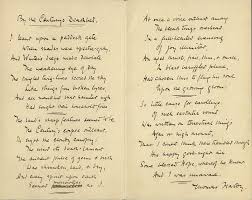 The integrating power of the erotics of poetry was on Heaney’s mind when he decided to take on the task of producing a modern English version of the quintessentially Anglo-Saxon Beowulf. Contemplating a version distinguished by many Hiberno-English uses, Heaney concluded, as he wrote in “The Irish Poet and Britain”, ‘So, so be it. Let Beowulf now be a book from Ireland.’
The integrating power of the erotics of poetry was on Heaney’s mind when he decided to take on the task of producing a modern English version of the quintessentially Anglo-Saxon Beowulf. Contemplating a version distinguished by many Hiberno-English uses, Heaney concluded, as he wrote in “The Irish Poet and Britain”, ‘So, so be it. Let Beowulf now be a book from Ireland.’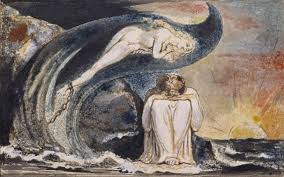 In 1944, in Warsaw, German soldiers scrawled numbers on the buildings in white paint and then systematically demolished the city, while the Soviet army watched and waited across the Vistula. After the war, the Poles returned to Warsaw and, living in the rubble, began to rebuild. Devastated cities across Europe faced the same choices. Should the ruins be left in view, like the cathedral at Coventry, with new buildings erected beside them, a permanent memorial? Should the rubble (with its dead) be hidden and a new, modern city built on top of it? Or perhaps, as the Poles decided, the old city should be replicated, rebuilt in the same place, in every last detail—every cornice, lamppost, and windowsill—an act of defiance and despair, the fiercest response to the fact that we can’t bring back the past, we can’t bring back the dead. In this replication was a kind of terror—the calling forth of spirits and the speaking aloud of a harrowing, unanswerable doubt: that the replica might erase precisely what it was meant to memorialize.
In 1944, in Warsaw, German soldiers scrawled numbers on the buildings in white paint and then systematically demolished the city, while the Soviet army watched and waited across the Vistula. After the war, the Poles returned to Warsaw and, living in the rubble, began to rebuild. Devastated cities across Europe faced the same choices. Should the ruins be left in view, like the cathedral at Coventry, with new buildings erected beside them, a permanent memorial? Should the rubble (with its dead) be hidden and a new, modern city built on top of it? Or perhaps, as the Poles decided, the old city should be replicated, rebuilt in the same place, in every last detail—every cornice, lamppost, and windowsill—an act of defiance and despair, the fiercest response to the fact that we can’t bring back the past, we can’t bring back the dead. In this replication was a kind of terror—the calling forth of spirits and the speaking aloud of a harrowing, unanswerable doubt: that the replica might erase precisely what it was meant to memorialize.